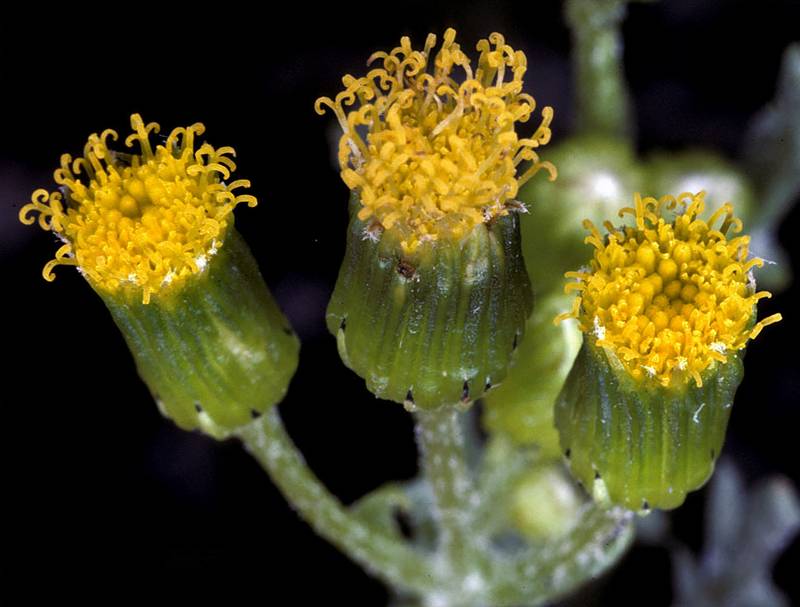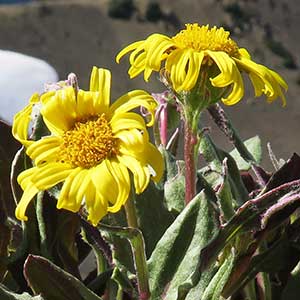Senecio vulgaris
Senecio neowebsteri
common groundsel, old man in the spring
Olympic Mountain ragwort
Leafy throughout, the leaves coarsely and irregularly toothed to pinnatifid, 2-10 cm. long and 5-45 mm. wide, the lower tapering to a petiole, the upper sessile and clasping.
Basal leaves large, petiolate, sometimes tufted on separate short shoots, the blade broadly oblanceolate to sub-rotund, up to 7 cm. long a 4 cm. wide;
cauline leaves few, usually strongly reduced;
leaves often with purplish margins.
Heads many, strictly rayless, the flowers all tubular and perfect; disk usually 5-10 mm. wide;
involucre 5-8 mm. high, the princeple bracts about 21, the bracteoles short but well-developed, black tipped;
pappus copious.
Heads solitary, nodding, the involucre 11-17 mm. high, the disk 1.5-2.5 cm. wide;
involucre bracts in a single series, equal, herbaceous, the tips pale;
ray flowers yellow, pistillate and fertile, the rays 10-15 mm. long;
disk flowers yellow, perfect and fertile;
pappus of white capillary bristles.
Achene sub-terete
Senecio vulgaris
Senecio neowebsteri
- Local floras:
BC,
CA,
OR,
WA
- Local Web sites:
CalFlora,
CalPhotos,
Flora NW,
PNW Herbaria,
Turner Photog.
WildflowerSearch
iNaturalist (observations)
USDA Plants Database
- LBJ Wildflower Center
- SEINet
- Plants of the World Online
- Encyclopedia of Life
- Wikipedia
- Google Image Search



